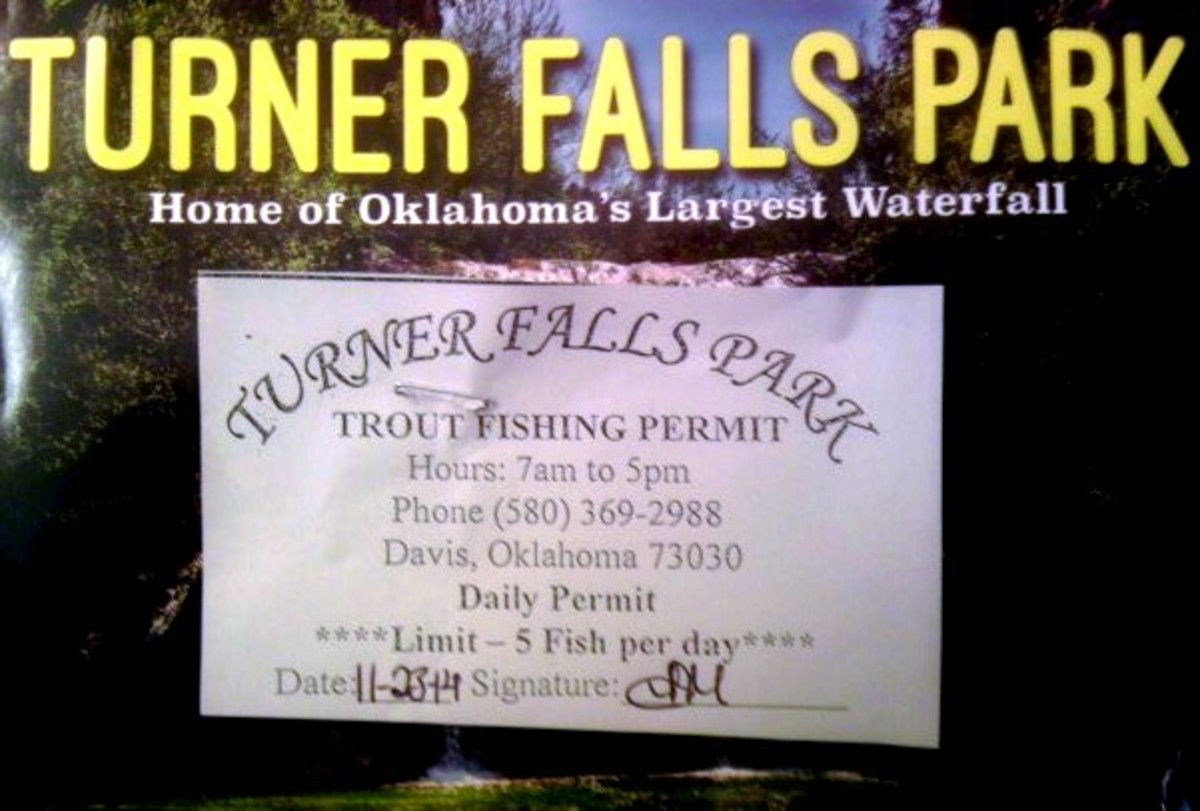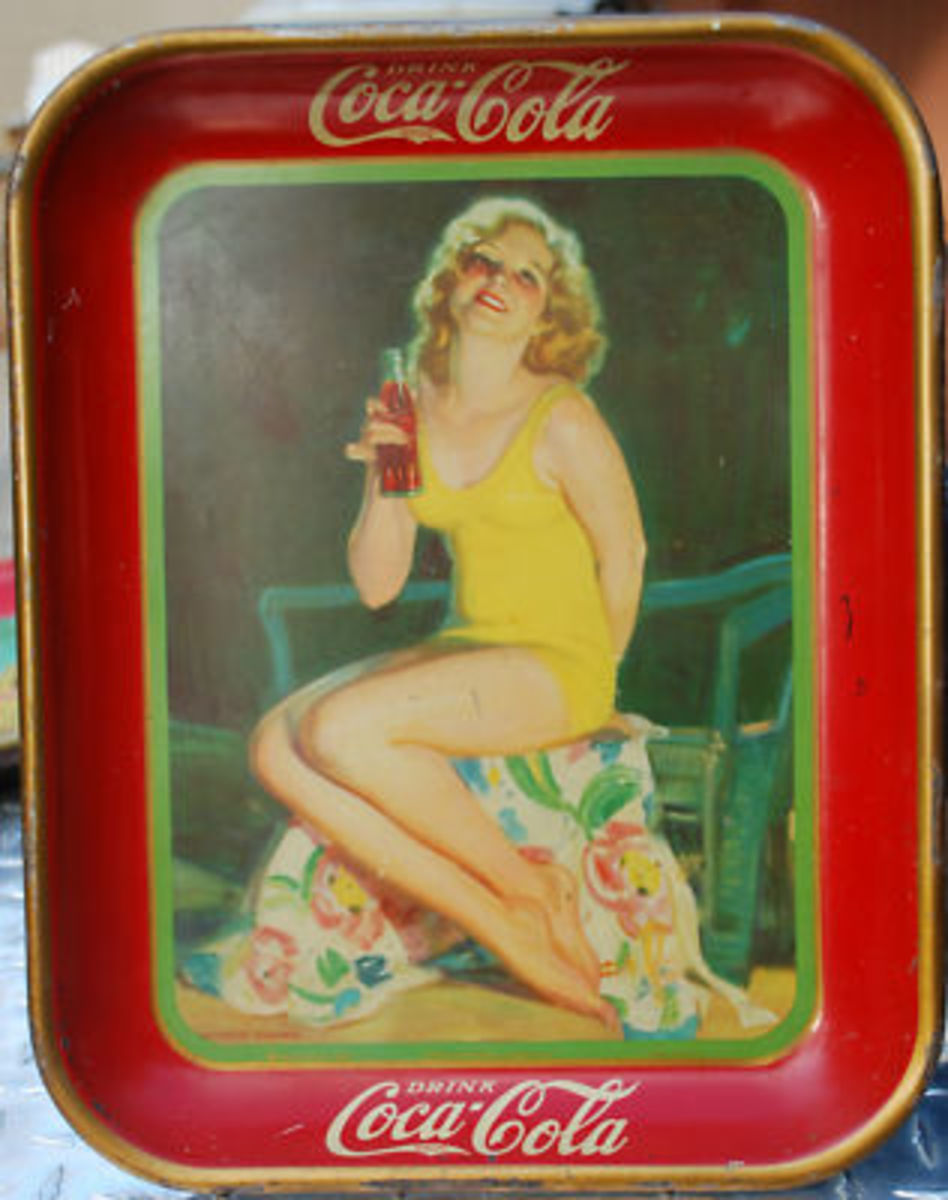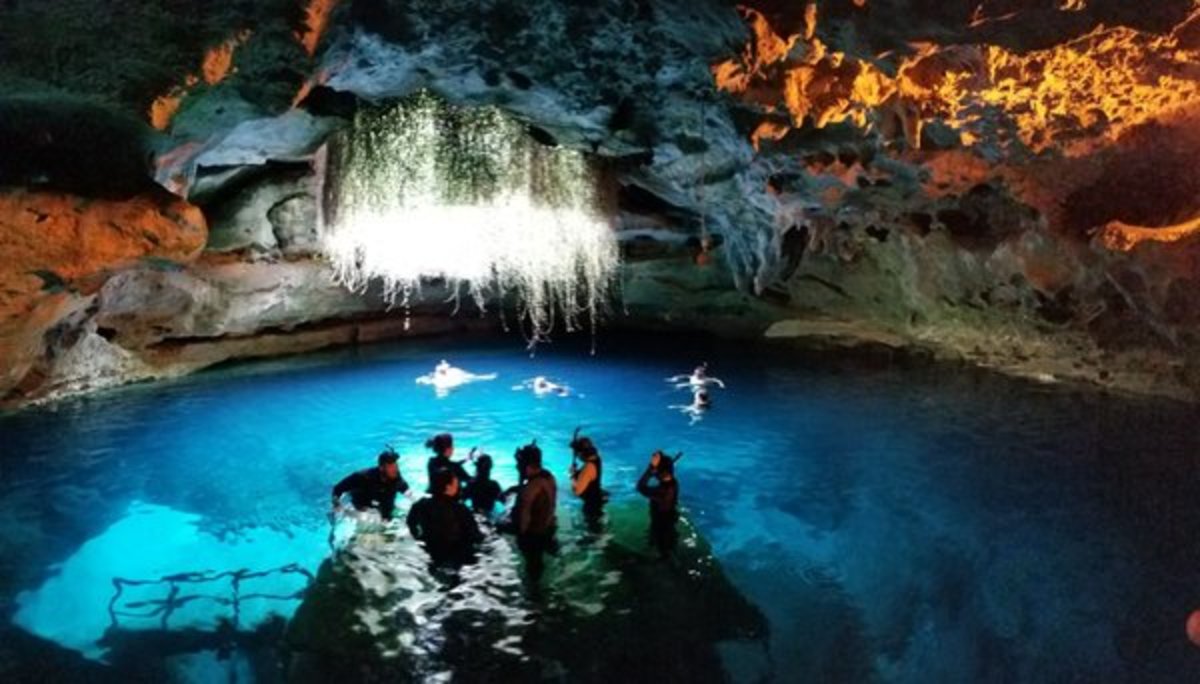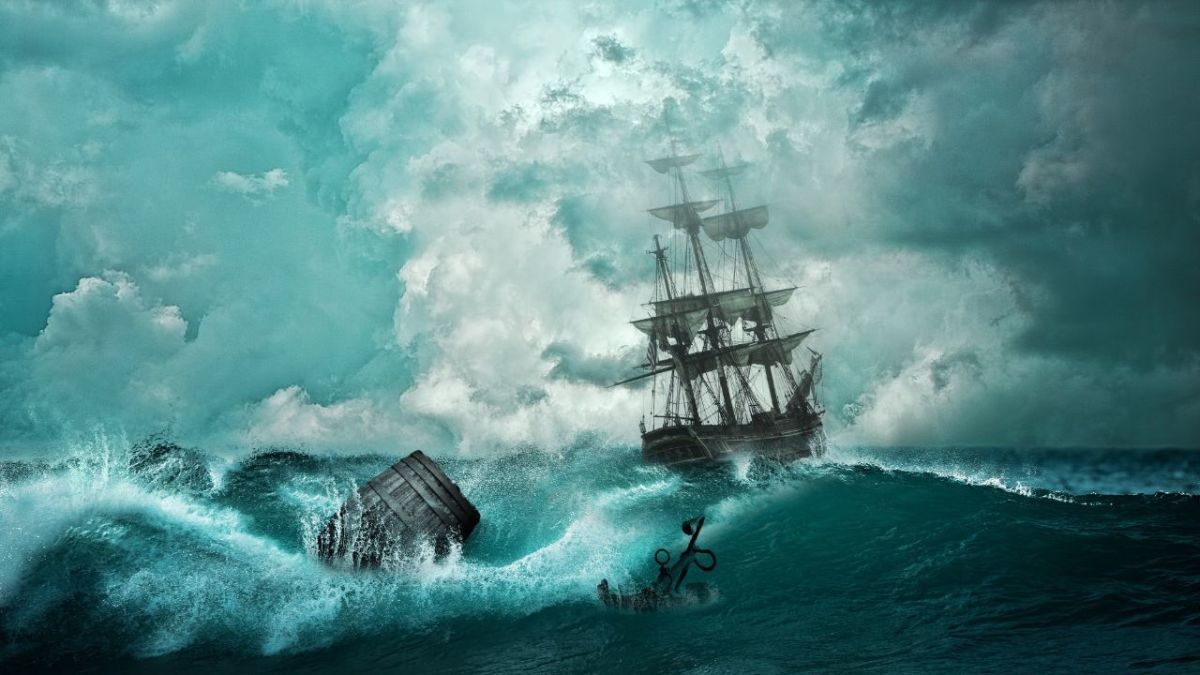Trout Fishing In The West - A Natives Inside Scoop-Part 2
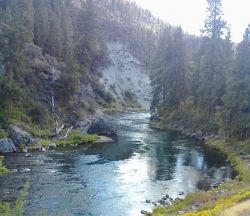
Water Reading 101
This is a continuation due to my long windedness. I realized that I actually have a lot more information to download than I could fit into one segment so here is part two. A link to part one can be found below.
The picture is one of my favorite holes and produced a 14 lb german brown trout, just not to me. Just up and around the bend is where I missed mine.
In the first installment I discussed some of the different reactions fish have to rainy weather, in my area. I made it a point to say that this is my experience with the fish in my area in the waters I frequent and the fish may act differently in your area. The idea is to find out what and why they act differently at different times of the year and in different conditions. I also discussed how acutely aware a fish is and how they have the upper hand so stay low and quiet, stalk your fish.
In this installment I will be discussing how I read water. Why I choose the specific spots to fish and the ones I pass by. I will also talk a bit about lake water and how I read the signs there. I have had the same fishing days as most of you with amazing days I can't forget to dismal days I wish I could forget. My most forgettable entailed breaking my favorite fly rod, losing my fly box, bashing my knee, and missing a huge fish which I have never seen again.
I have taught my friends and my kids these simple techniques to reading the water and how to use it to your advantage. I always start with the general way in which a trout feeds and how it should guide the fisherman. Fish for the most part are facing into the current looking up stream or to be more specific they are faced up stream and looking to the sides. This is actually one of the most valuable tips you can get because once you realize how skittish a trout is you become aware of your location in relation to where the fish is lying. Heading down river at a fish and the casting across directly at the fish is not the best idea. Moving in slowly from behind and casting above the trout allowing your bait to naturally ride the current to your fish is a great idea. I have cast down to fish and across, but I stay very low and present my bait gently and I never land my bait right on a fish's head.
Following the general approach described helps to pick holes from the start, but there is some more information to consider. Fish are opportunistic feeders and try to expend the least amount of energy. You see, a fish doesn't think about this, but it is very counter productive to expend a large amount of energy catching food. Most animal behavior is driven by saving energy and collecting easy calories. Trout tend to like a void in the current or a neutral spot where they do not have to do very much to remain in one spot. Most of the time in an eddy behind a rock or under an undercut where they are shielded from the current. They hang out relaxed and wait patiently for food to come there way. This is not true all the time as trout also hunt for food actively to but still use energy conservation. A brown will swim through a rocky area out of the main current looking for crayfish then turn into the current and allow the energy of the water to take it back down stream then repeat its hunt path.
Many people misconstrue what I am saying here to mean that lazy trout hang out in slow moving water. Nothing could be farther from the truth and trout love the white water and swift current. Even when a trout is in very swift even raging water it is not expending energy as there are plenty of neutral areas under the water to hang out. When the fish is triggered to strike at some food it turns sideways to the food and the current carries fish and food together downstream. The fish acquires the food and darts into the first available void to relax and actually has expended a very small amount of energy. This is very valuable information to have when reading a river and never be afraid to fling some bait in those rapids because not only are the fish there they can see the bait easily. Also the rough water is a great help to the fisherman because it provides some cover and some vibration dampening so stealth is not so crucial, but still use stealth.
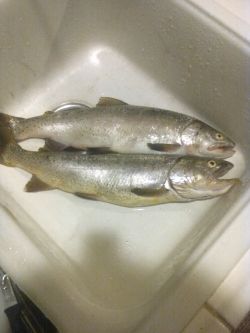
The Rougher The Better
The best trout I have caught in rivers have all been in the white water. The rough bubbling water has another great appeal to fish and especially bigger fish because bubbling white water is aerating the water. The more the oxygen content of the water the healthier the fish will be as oxygen is a requirement of muscle and big fish need more oxygen. I use the same basic rules and cast above the fish and let the current drag my bait to the fish, this works very well. Granted that if you cast up stream you need to keep your bait moving so it doesn't get snagged.
So another misconception is that fish are always right behind a rock and people love to cast right behind rocks. It has been more to my experience that they like at hang a little downstream of the rock but still in the eddy (the swirling vee behind the rock). The eddies are what I look for in a river and not just the obvious ones where a rock is sticking up out of the water. Really large rocks are everywhere just under the surface and they produce pronounced or scarce eddies on the surface, but they have the same effect on the fish. I cast a distance above the rock and play the entire eddy.
Another favorite water configuration is the chute where the water is funneled to one side or the other or just concentrated in the middle. This is a kill box for fish where the overall area is condensed into a much easier to manage hunting ground. When I see a deep vee channel with rock or shelved areas along its side I know the fish is on. The fish lurk under the shelves and scan the fast channel for food, these areas are the best. The shelves give the fish several advantages where they have a void from the current and protection from predators like hawks, eagles, and owls. A good deep undercut bank is great as long as it is right next to the main current flow. I have had zero luck with undercut banks that are some distance from the main current, like more than five feet. An undercut bank that is abutted to the main current probably houses that monster you've been looking for.
The last things I do to read the water in rivers is to look for or net floating food and feel the water temperature. Warm water is detrimental to most trout while other fish don't mind it. Trout in general like the water to be around fifty eight degrees and full of oxygen. This does not mean they aren't around in warmer water but, they will definitely be much less active. The same is true of very cold water as the fish get very lethargic in very cold water. The fish pick optimum times when they have the most energy to do the bulk of their feeding. First light meets all the criteria as the water is cooler and the oxygen content is up but, these conditions are going to change as the sun warms everything up. Late evening has the same effect as the water has started to cool as the sun wanes an opportunity to feed before bedtime is irresistible and required.
Lakes Are A Whole Other Animal
Lake waters are a whole other subject all together. The best way to think of a lake is like a layer cake where every layer is a different set of conditions. Obviously the deeper you go the higher the pressure and the colder it gets. So where are the fish, simple, where they are expending the least amount of energy to live and still be able to feed. Lake trout are not as concerned with cover and finding voids as river trout, but they do want some kind of topography to aid in hunting. They also need areas called redds to lay eggs. Lake trout generally come up from under or behind there pray for the element of surprise but, don't necessarily swallow their prey tail first. Most fish I have gutted that have fish in their stomachs have swallowed them head first to avoid choking. Also every brown trout has had crayfish swallowed tail first, imagine swallowing a crayfish claws first. The claws become totally useless when the poor crayfish is in the fish's throat heading down tail first.
Realizing that lake trout were swallowing fish head first but, coming at them from behind lead me to an epiphany. The fish where coming from behind then exploding alongside with a quick turn and inhaling these feeder fish from the front. This explained why I had missed so many fish even though I was using treble hooks, they were hitting my swivel because I kept finding my swivels unsnapped. I used this to my advantage and modified some lures to take advantage of this new knowledge, my catch rate doubled maybe tripled.
Lake trout have the same needs as river trout, the basics of survival, oxygen, water temperature, and feed. The lake trout go deeper to find that comfort zone during the summer but, they go out of their comfort zone for short periods to feed. Lake trout seem to be more fickle than river trout in my experience, many more zero fish days on the lake then I ever had at the river. I really don't have an answer for this phenomenon and find no rhyme or reason for it. There are so many factors that can send fish into and out of feeding mode. Maybe there is a lot of nutrients entering the water suddenly from the river mouth, this will act like a lake wide chumm streak and call a lot of fish out of the area. I had a favorite lake that started up a huge water exchange pumping station to circulate their fish rearing station. I think every fish in that lake was huddled around the exhaust port from that facility. I can imagine the uneaten fish food, fish poop, and fish scent that those pumps were dumping into the lake, irresistible. Needless to say that that area was shoulder to shoulder with fishermen.
There are going to be many different environments and circumstances that affect fish habitat and behavior. What I presented here are just good guidelines that apply most of the time in most waters but, not all. I hope these tips and tricks help you and please give me a tip or trick if you have some, I would appreciate it, as those trout still fool me sometimes too.
Author's Request
I do have a request and that is to take a look at some of the items that I have chosen to list below. I do not choose all the advertising on my blog but anything listed as "Authors pick" are quality items that I recommend. I'm not pushing sales just asking that you take a look and if you enjoyed this article please let me know by using the "like" buttons at the top and comment section at the bottom, I would appreciate it.
Trout, Trout, and more Trout
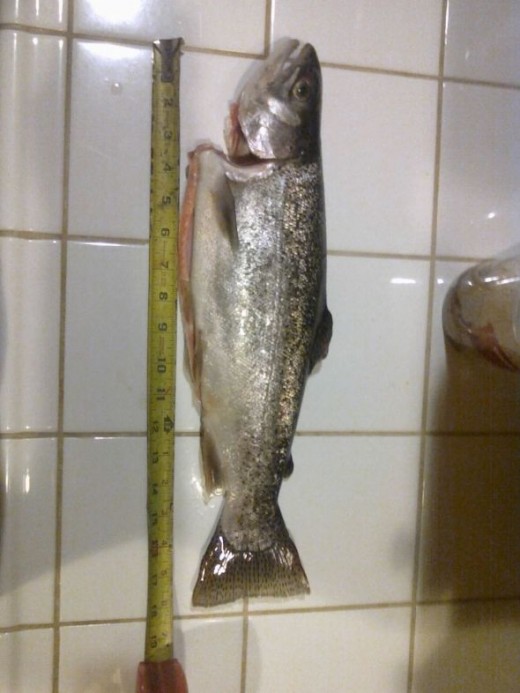
Authors picks
Authors Video Pick
My opinion of the fisherman's technique in the video are mixed. He stays to low which is good but his technique is somewhat violent and I don't care for his fly presentation at all. This is a no-brainer fishing hole with trout rising all over the place, should have been a fish fest.





